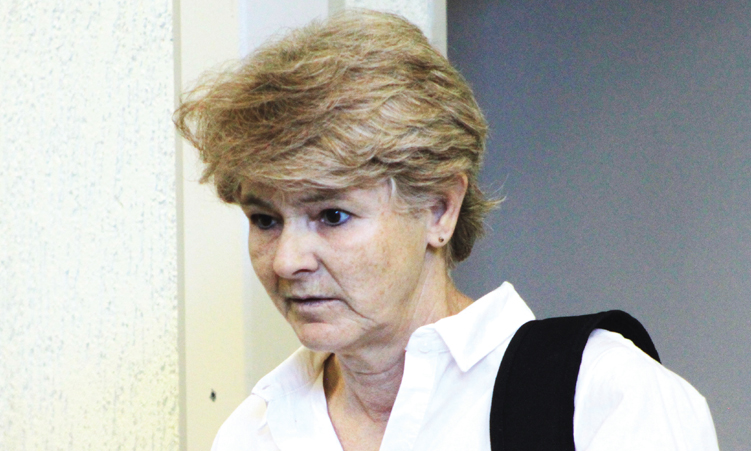JOHANNESBURG – Africa’s elephant war between those who want to lift the ban on ivory sales and those who want to keep it is about take a new turn.
Nuclear physicist Elias Sideras-Haddad says he can determine when an elephant died as well as its age by a new carbon-dating technique applied to the tusks – a process made possible by the above-ground nuclear tests of the past. Verifying when an elephant died could, he hopes, enable poor countries to resume ivory sales – banned in 1989 – through regulations which could stipulate that only tusks from animals dead for a specified period of time could be sold.This could be a huge deterrent to poachers who are unlikely to hoard illegally taken tusks for years.The trade was halted in 1989 in a bid to snuff out rampant poaching.The new dating system relies on traces of carbon 14 which became abnormally abundant in the atmosphere globally because of early nuclear weapons tests.The amount of carbon 14 in the atmosphere peaked in the mid 1960s when such testing was banned by the nuclear powers and has since been decreasing – though it won’t reach pre-testing, or pre-1945 levels, for about another 20 years.Using a process called accelerator mass spectrometry, a tusk’s root and tip are examined to determine when its owner was born and when it expired by matching the traces of carbon 14 with the amount known to be in the atmosphere at certain times.The initial experiment was conducted on three tusks at the Lawrence Livermore National Laboratory in California and Sideras-Haddad presented his peer-reviewed work with colleague Tom Brown at an academic conference in Japan two years ago.Sideras-Haddad says the technique will stop poaching.”We can impose particular time constraints for (the ivory) trade.For example, we can say that you can only trade ivory from elephants that died 10 years ago,” he told Reuters at his office at Johannesburg’s University of the Witwatersrand.”If you are a poacher and you killed an elephant yesterday you will have to put it (the tusks) in the cupboard for 10 years before you are allowed to trade.Ten years is enough time to put any poacher gangster team out of business,” he said.He said it can be used in conjunction with another application which can determine an elephant’s diet from its tusk and therefore tell where the animal originated.The 1989 ban on the trade in ivory is widely credited with stemming a slaughter that saw Africa’s elephant population plummet to 600 000 from about 1,2 million in just over a decade.”As long as the ivory trade continued, we were going to lose elephants to poachers,” renowned Kenyan conservationist Richard Leakey wrote in his memoir ‘Wildlife Wars’.Critics maintained it was easy for the poaching industry to launder “dirty” ivory with legal supplies and that only a total halt to sales of the commodity, used in a variety of ways from piano keys to decorative carvings, would stop the killings.TO CULL OR NOT TO CULL?Sideras-Haddad says his new technique will put paid to poaching – though one reason he wants to see the ban lifted is sure to provoke outrage from animal welfare groups.A Greek who came to South Africa 20 years ago, Sideras-Haddad wanted to find a poacher-proof way to restart ivory sales so his beloved Kruger National Park could raise revenue and so that it could cull elephants again.He says that any tusks from culls could be placed in storage for 10 years to relieve fears that poachers could try to use them as an excuse to mix illegal supplies into the market.A moratorium on Kruger elephant culls was imposed in 1994.Many scientists say that as a result, surging populations of the world’s largest land mammal are damaging the park’s ecosystems.The park is enclosed and while there are plans to create a super park by dropping the fences with neighbouring Mozambique and Zimbabwe, the population will eventually reach a point where it can no longer be sustained.This could have disastrous consequences for other animals.Elephants have big appetites, with adults consuming on average around 170 kilos of food a day.Kruger’s population has been growing at seven per cent a year and now stands at close to 11 000 – far above the optimal number of around 7 000 favoured by some scientists.”I love it (the Kruger) and I don’t want it to be destroyed… I think it is inevitable to reintroduce (elephant) culling,” said Sideras-Haddad.His stance on culling – which he admits is ghastly – is informed by the mind of a scientist, not the heart of a nature lover.- Nampa-ReutersVerifying when an elephant died could, he hopes, enable poor countries to resume ivory sales – banned in 1989 – through regulations which could stipulate that only tusks from animals dead for a specified period of time could be sold.This could be a huge deterrent to poachers who are unlikely to hoard illegally taken tusks for years.The trade was halted in 1989 in a bid to snuff out rampant poaching.The new dating system relies on traces of carbon 14 which became abnormally abundant in the atmosphere globally because of early nuclear weapons tests.The amount of carbon 14 in the atmosphere peaked in the mid 1960s when such testing was banned by the nuclear powers and has since been decreasing – though it won’t reach pre-testing, or pre-1945 levels, for about another 20 years.Using a process called accelerator mass spectrometry, a tusk’s root and tip are examined to determine when its owner was born and when it expired by matching the traces of carbon 14 with the amount known to be in the atmosphere at certain times.The initial experiment was conducted on three tusks at the Lawrence Livermore National Laboratory in California and Sideras-Haddad presented his peer-reviewed work with colleague Tom Brown at an academic conference in Japan two years ago.Sideras-Haddad says the technique will stop poaching.”We can impose particular time constraints for (the ivory) trade.For example, we can say that you can only trade ivory from elephants that died 10 years ago,” he told Reuters at his office at Johannesburg’s University of the Witwatersrand.”If you are a poacher and you killed an elephant yesterday you will have to put it (the tusks) in the cupboard for 10 years before you are allowed to trade.Ten years is enough time to put any poacher gangster team out of business,” he said.He said it can be used in conjunction with another application which can determine an elephant’s diet from its tusk and therefore tell where the animal originated.The 1989 ban on the trade in ivory is widely credited with stemming a slaughter that saw Africa’s elephant population plummet to 600 000 from about 1,2 million in just over a decade.”As long as the ivory trade continued, we were going to lose elephants to poachers,” renowned Kenyan conservationist Richard Leakey wrote in his memoir ‘Wildlife Wars’.Critics maintained it was easy for the poaching industry to launder “dirty” ivory with legal supplies and that only a total halt to sales of the commodity, used in a variety of ways from piano keys to decorative carvings, would stop the killings.TO CULL OR NOT TO CULL?Sideras-Haddad says his new technique will put paid to poaching – though one reason he wants to see the ban lifted is sure to provoke outrage from animal welfare groups.A Greek who came to South Africa 20 years ago, Sideras-Haddad wanted to find a poacher-proof way to restart ivory sales so his beloved Kruger National Park could raise revenue and so that it could cull elephants again.He says that any tusks from culls could be placed in storage for 10 years to relieve fears that poachers could try to use them as an excuse to mix illegal supplies into the market.A moratorium on Kruger elephant culls was imposed in 1994.Many scientists say that as a result, surging populations of the world’s largest land mammal are damaging the park’s ecosystems.The park is enclosed and while there are plans to create a super park by dropping the fences with neighbouring Mozambique and Zimbabwe, the population will eventually reach a point where it can no longer be sustained.This could have disastrous consequences for other animals.Elephants have big appetites, with adults consuming on average around 170 kilos of food a day.Kruger’s population has been growing at seven per cent a year and now stands at close to 11 000 – far above the optimal number of around 7 000 favoured by some scientists.”I love it (the Kruger) and I don’t want it to be destroyed… I think it is inevitable to reintroduce (elephant) culling,” said Sideras-Haddad.His stance on culling – which he admits is ghastly – is informed by the mind of a scientist, not the heart of a nature lover.- Nampa-Reuters
Stay informed with The Namibian – your source for credible journalism. Get in-depth reporting and opinions for
only N$85 a month. Invest in journalism, invest in democracy –
Subscribe Now!










